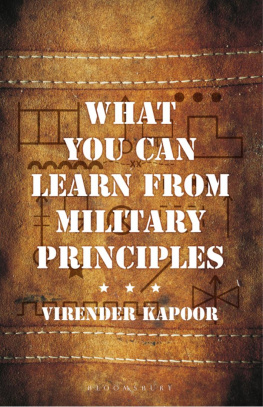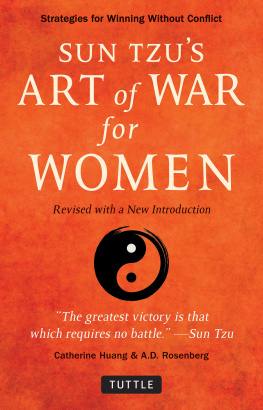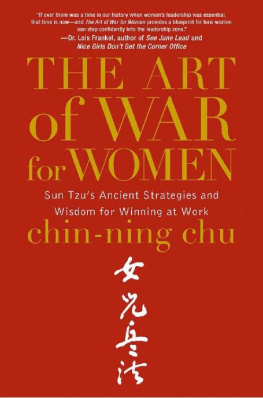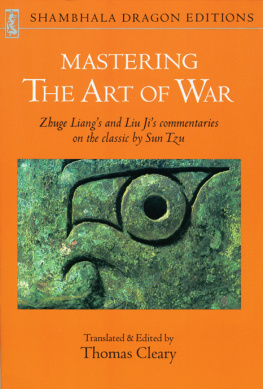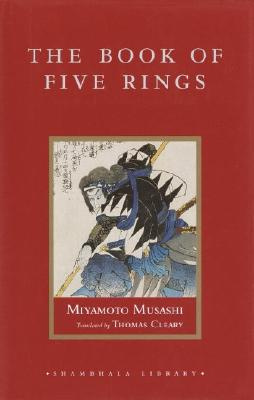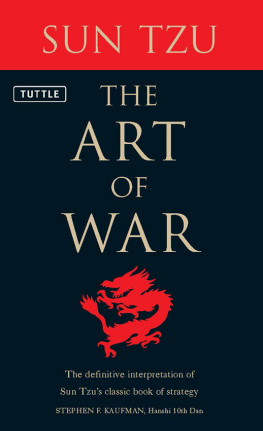Understanding Sun Tzu
on the
Art of War
The Oldest Military Treatise in the World
By Robert L. Cantrell
Center For Advantage
Arlington, VA
www.centerforadvantage.com
Center For Advantage
P.O. Box 42049
Arlington, VA 22204
Copyright 2003 by Robert L. Cantrell
Published by Center For Advantage
www.centerforadvantage.com
All rights reserved. No part of this book may be reproduced in any form or by any means, electronic or mechanical, including photocopying, recording, or by any information storage and retrieval system, without permission in writing from the publisher.
Printed in the United States of America
First Printing 2003
Library of Congress Control Number: 2002093398
ISBN 0-9722914-0-7
Attention Corporations, Educational Institutions, and Professional Organizations: This book is available at quantity discounts for educational and gift purposes. For information please contact - Center For Advantage, P.O. Box 42049, Arlington, VA 22204; info@centerforadvantage.com.
Contents
Dedicated to the soldiers
Preface
2,500 years ago a Chinese warrior and philosopher named Sun Tzu became a grand master of strategy and captured the essence of his philosophies in a book called, by English speaking nations, Sun Tzu on the Art of War. To this day, military strategists around the world have used Sun Tzus philosophies to win wars and have made Sun Tzu on the Art of War a staple of their military education.
Those seeking to understand strategy in business, law, and life have also turned to Sun Tzu on the Art of War for the wisdom therein. For at the heart of Sun Tzus philosophies are strategies for effective and efficient conflict resolution useful to all who wish to gain advantages over their opposition.
To read Sun Tzu on the Art of War is not to immediately understand it, however. Readers often find the text difficult to work with and Sun Tzus philosophies counterintuitive to their day-to-day reality. This causes a dilemma for those who wish to teach and study Sun Tzus philosophies. To simplify Sun Tzus philosophies risks losing the subtlety of thought necessary to master Sun Tzu on the Art of War. To keep the subtlety risks losing the most basic insights to the complexity of the text.
Capturing the subtlety of Sun Tzus philosophies in an understandable form is where Understanding Sun Tzu on the Art of War comes in. In this book, the author uses his many years of practical experience with Sun Tzus philosophies to clarify them without simplifying them. He does so by examining contemporary battlefields within the context of Sun Tzus philosophies and by examining Sun Tzus own Taoist philosophical sources, sources that have been heard in popular Western culture through voices such as Yodas in the Star Wars movies. A lot goes on between the lines in Sun Tzu on the Art of War, and that gives the book its power.
Authors notes:
- The second half of this book contains a complete edited version of the original Lionel Giles translation of Sun Tzu on the Art of War that Luzac and Co. published in London and Shanghai in 1910. This edited version was designed to make the text clearer for modern readers than the dated original. Giless translation, regardless, is still considered one of the best English translations available. Those with a more scholarly interest in Sun Tzu may also wish to read a copy of the Lionel Giles translation in its original form for which a number of sources exist both electronically and in hard copy.
- This book uses masculine pronouns throughout the text. Such references pertain to both genders as applicable to a situation.
- Any references that involve the commitment of bodily harm are intended to illustrate Sun Tzu on the Art of War for its originally intended purpose, war. Such illustrations are meant for use literally only by those government-sanctioned professionals authorized to undertake such activities as Sun Tzu described them, for example, military soldiers in the conduct of their duties. Those in other professions should take such references figuratively.
- Excerpts from the Tao Te Ching are edited versions of a translation written by James Legge and published by Humphrey Milford in London in 1891. This editing is designed to make the text clearer for present day readers than the dated original.
Notes on the cover:
- The cover art shows a spearhead that was hand forged in the ways characteristic of those used to create weapons throughout Asia and Europe in the pre-industrial ages.
- The Chinese characters used on the cover appear on the original Lionel Giles publication of Sun Tzu on the Art of War from 1910. They translate literally to Sun Tzu on military ways.
Sun Tzu said:
The art of war is of vital importance to the State. It is a matter of life and death, a road to safety or to ruin. Therefore, it is a subject that must be thoroughly studied.
Introduction
Picture the rapids of a great river. See its waters rush over and around giant boulders. Close your eyes and listen to its roar. Then feel its relentless power when it crashes over a precipice. Now picture that you remove a cup of water anywhere along this river and sense how that water loses its power and starts to dry up in the sun. Then empty the cup back into the river, and know that as a part of the whole river, that water wears rocks into sand and does not dry up. So a soldier and philosopher observing a river from its banks in this fashion might hypothesize that a great army kept whole can conquer nations and still stay whole, but an army divided or too small will face peril and death. Any review he might make of successful military campaigns in the past and in his present would confirm his hypothesis. Like a river on its journey to the sea, he could therefore conclude that the way of fighting involves fighting as a unified whole, an entire army acting as one, with one objective in mind, and with its own preservation as an army also kept in mind.
This philosopher records his idea in writing on the bamboo strips of his time. Later, readers of his work see that his idea rings true regardless of their profession. A powerful and universal principle comes to light called the principle of winning whole, meaning winning with your resources and your objective intact. It represents the first of six universal principles described by Sun Tzu that, when used together as one, present the most powerful strategic method yet recorded in any profession for winning conflicts.
In this book, you have an invitation to take a journey that will uncover the heart of Sun Tzus strategic method and how to apply it. This journey could change how you approach the many challenges you will face throughout the rest of your life. You will read about a martial art of the mind, a way to outthink and outfight those who oppose your needs and desires. Ideally, you will also gain an appreciation of the many ways opponents may direct force against you so you can position yourself accordingly to preclude harm.
THREE STEPS BACK
On this journey, we will take three steps back from the present day to review Sun Tzus original work and representations of Sun Tzus own source material. This material includes:
- The philosophies of Sun Tzu on the Art of War as they apply to war.
- Taoist philosophies, described best by the Chinese philosopher Lao Tzu in the Tao Te Ching


